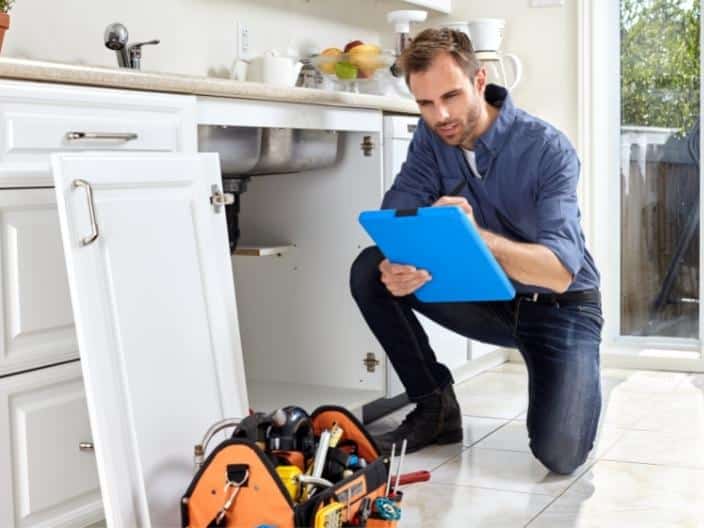Are you currently hunting for info around DIY Plumbing Projects and When to Call a Professional?

Introduction
Pipes problems can vary from small aggravations to significant migraines, often prompting homeowners to decide between tackling the trouble themselves or employing an expert plumbing technician. Understanding when to do it yourself and when to look for professional aid can save time, cash, and stop potential disasters. This article discovers the factors to think about when making this vital decision.
Benefits of DIY Pipes
Taking on plumbing jobs on your own can be gratifying in a number of methods, particularly for simpler jobs.
Intricacy of Jobs
Some plumbing issues require specialized expertise and devices beyond common property owner abilities. Mishandling complicated troubles can lead to additional damage and costly repairs.
Security Concerns
Dealing with pipes systems involves dangers such as exposure to water damages, possibility for electrical risks, and managing devices incorrectly. Safety preventative measures should be observed to prevent mishaps and guarantee reliable repairs.
Indicators to Call an Expert Plumbing Professional
Identifying when a plumbing concern surpasses do it yourself capacities is vital to avoid getting worse problems.
Indicators of Complicated Concerns
Instances include:
Prompt expert intervention is essential to attend to these problems effectively and lessen damages.
Do It Yourself Pipes Tips
For successful DIY pipes, it's necessary to be prepared with the right devices and follow correct treatments.
Fundamental Tools and Products
Secret devices for do it yourself plumbing:
Step-by-Step Guides
Clear directions make certain secure and efficient DIY fixings:
Choosing the Right Time to Do It Yourself
Determining when to tackle plumbing tasks yourself needs examining both the intricacy of the issue and individual convenience degrees.
Assessment List
Take into consideration:
Price Savings
Do it yourself plumbing tasks typically conserve money by staying clear of specialist service charge. Jobs like taking care of small leakages, changing taps, or installing new showerheads are examples where homeowners can take care of repairs without working with a plumbing.
Skill Enhancement
Taking part in do it yourself pipes uses a possibility to discover and enhance practical skills. Basic tasks encourage home owners to recognize their plumbing systems better and acquire confidence in handling tiny fixings individually.
Risks of Do It Yourself Plumbing
While DIY projects provide benefits, certain dangers need to be meticulously taken into consideration before trying repair services.
When to Definitely Call an Expert
Particular situations demand prompt experienced attention to stop extensive damages or security hazards.
Emergency Circumstances
Instances consist of:
Searching for and Working With a Specialist Plumbing
Selecting a qualified plumber guarantees trusted service and satisfaction in resolving plumbing issues.
Requirements for Choice
Variables to consider:
Expense Evaluation: do it yourself vs. Professional Solutions
Comparing the monetary implications of DIY efforts versus expert plumbing services helps in making educated decisions.
Financial Considerations
Examine:
Verdict
Deciding whether to DIY or call a specialist plumbing hinges on understanding the intricacy of pipes problems and personal abilities. By evaluating the benefits and threats, homeowners can make enlightened selections that promote efficient maintenance and protect their homes from plumbing calamities.
DIY vs. Professional Plumbing Repairs: When to Call a Pro
When dealing with plumbing issues or embarking on renovation projects, homeowners have to decide whether or not they want professional help with their home’s plumbing system. While master plumbers can complete just about any plumbing project, they can cost a pretty penny. On the other hand, DIY plumbing projects can very quickly go awry, which can make things worse.
In this blog, we’ll explore common plumbing projects that homeowners can confidently tackle, provide insights into the essential tools needed, and discuss critical DIY mistakes to avoid. Understanding these distinctions not only helps in maintaining the efficiency and longevity of your home’s plumbing system but also ensures safety and cost-effectiveness in your repair endeavors.
Installing/Replacing Certain Plumbing Fixtures
Most homeowners should be able to install new plumbing fixtures or replace old ones that are damaged or old. Using basic tools, you should be able to effectively:
Replace faucet washers or cartridges Replace showerheads Install a new toilet seat Hook up new appliances Replace hose bibbs Unclogging Drains
You should also be able to fix any clogged drains within your home by using a plunger, plumber’s snake, or natural solutions like baking soda and vinegar. These can often clear clogged sinks or bathtubs without needing professional drain cleaning assistance.
Fixing Running Toilets
Another plumbing issue many homeowners may be able to handle is a running toilet. Toilets may run more than they should due to a faulty flapper or float inside the tank. Toilet replacement parts are easy to find and often come with easy-to-follow instructions.
Repairing Leaky Faucets
A dripping faucet can not only be an annoyance, but it can also be a waste of water. Leaky faucets can normally be fixed with basic tools and a basic understanding of how they work, making them easy to fix.
Adjusting Water Heater Temperature
If you are able to follow basic safety precautions, you should be able to adjust the temperature on your hot water heater, which can improve your home’s energy efficiency and also increase comfort.
Fixing Minor Leaks in Pipes
For small plumbing leaks, particularly ones at pipe joints, using plumbing tape or a patch kit can be a temporary fix while you decide on a more permanent solution. Repairing broken pipes, however, can be more difficult and may require professional attention.

I hope you enjoyed our article about DIY Plumbing Projects and When to Call a Professional. Thanks for finding the time to read our posting. Be sure to take the opportunity to share this blog posting if you appreciated it. Bless you for your time. Kindly stop by our site back soon.
Visit My Site